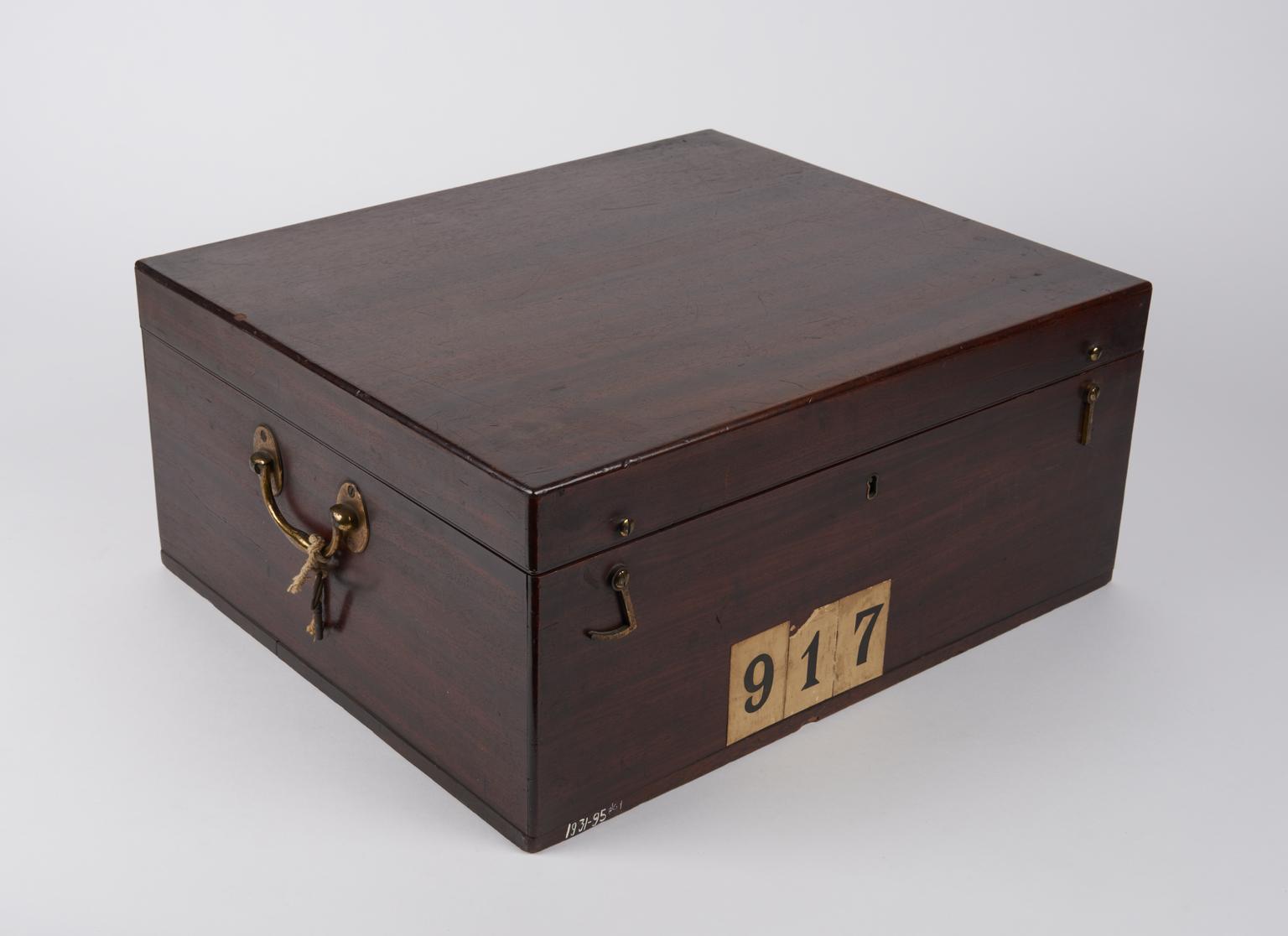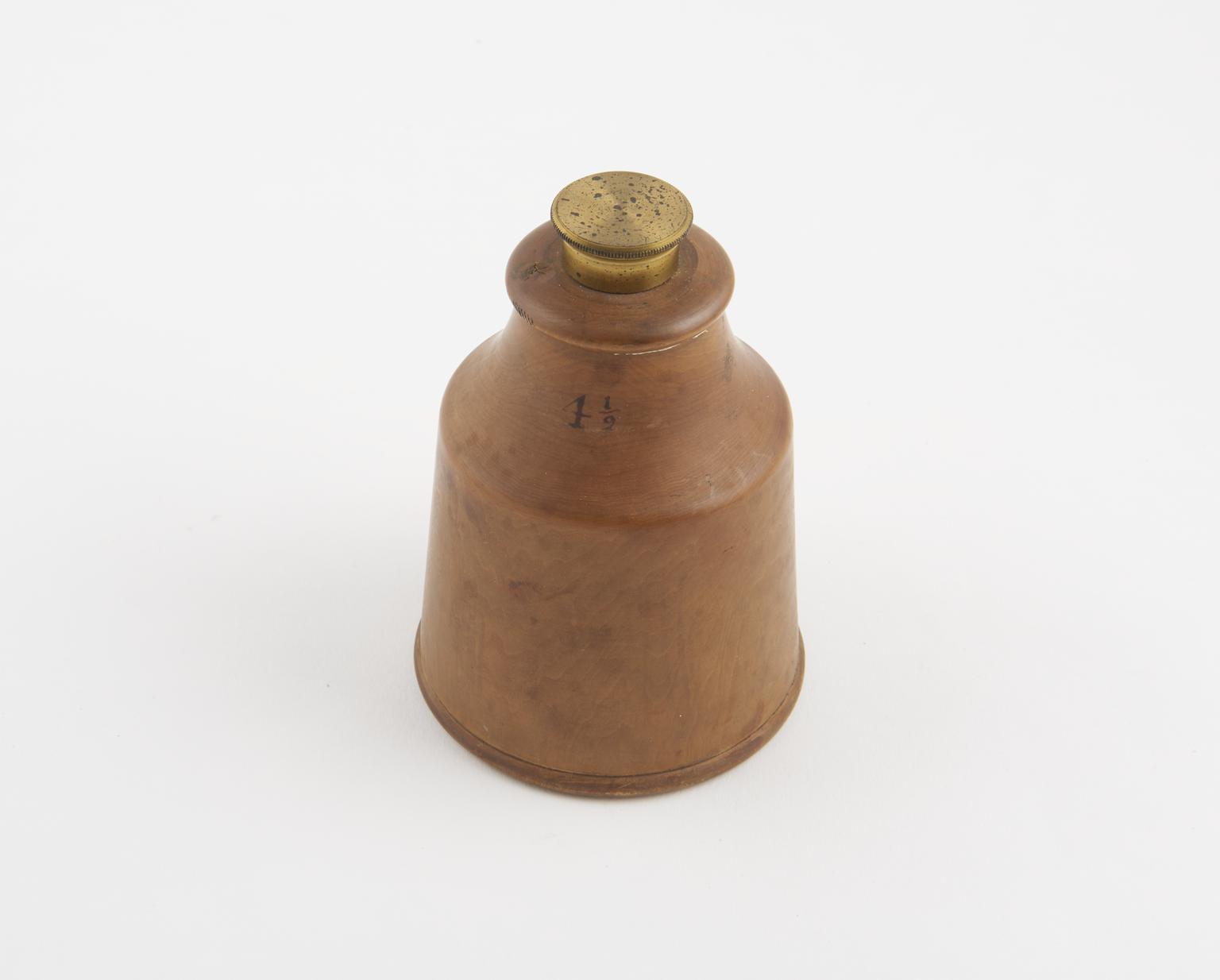

Brass framed sextant with stand, artificial horizon and case.
- Made:
- 1790-1800 in Fleet Street
- maker:
- J. & E. Troughton
Brass lacquered sextant with straight-bar-pattern, 24 pillar frame, polished brass limb, wooden handle with counterbalanced tripod pillar stand and mercury artificial horizon in wooden box, all by John and Edward Troughton, 136 Fleet Street , London, England, 1790-1800. Consists of brass 127° scale (-5° to 140°) with 20’ divisions and brass vernier (10”), three index-filter shades (red & green), two horizon filters (red & green), scale magnifier on 90mm swivelling arm. Fitted with threaded telescope bracket for sighting telescope (182mm – inverted image) with 2 extra draw tubes, 131mm sighting tube and other accessories. The fitted rectangular case has in the lid the trade card for J. & E. Troughton. The artificial mercurial horizon consisting of a rectangular wooden trough fitted in a tin tray and a brass-framed, roof-shaped cover with glazed side panels, unsigned, made later, 1845-55.
Dated to the late eighteenth century, this brass sextant was made by the London instrument makers, John and Edward Trougton. With its tripod stand and telescopic sights, it was designed for use in navigation, surveying and hydrography. The sextant could be used to find your latitude by measuring the height of the midday Sun or a suitable star at night. Longitude could also be found from determining local noon from the maximum height of the Sun and comparing that time with a chronometer set to a fixed meridian. The angle between the fixed stars and the Moon could also be used to find longitude after lengthy calculations using tables in the Nautical Almanac.
Details
- Category:
- Astronomy
- Object Number:
- 1931-95
- Measurements:
-
overall (estimate): 530 x 430 x 310 mm
- type:
- sextant, artificial horizon - mercury and instrument case
- credit:
- Col. A.W. Bentley.







